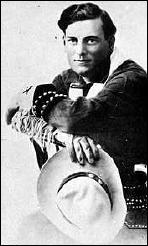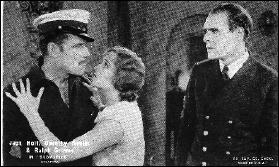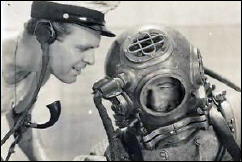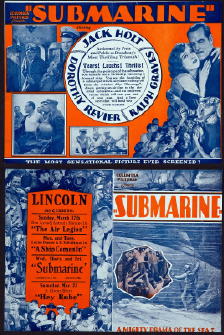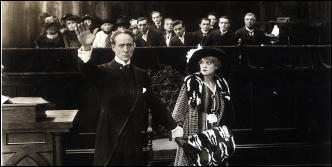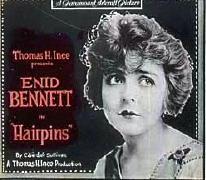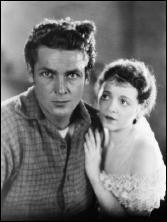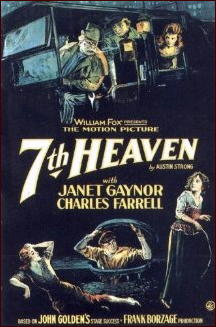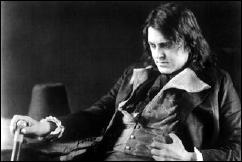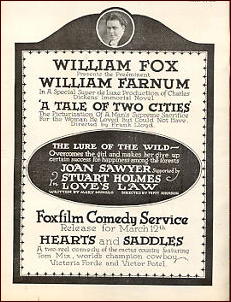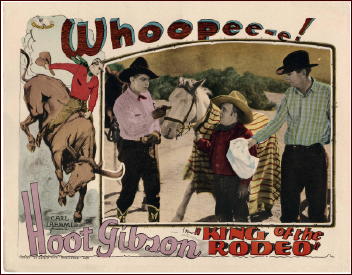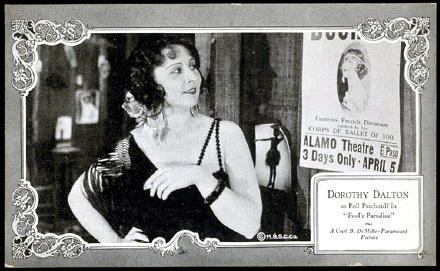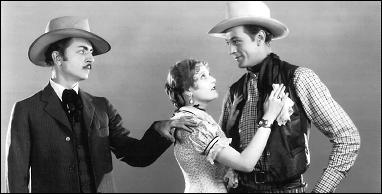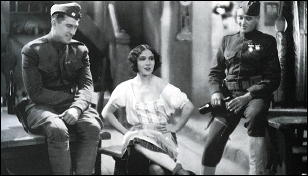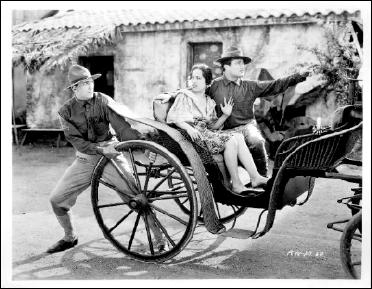Wed 14 May 2014
A Western Movie Review by Walter Albert: BRONCHO BILLY AND THE BABY (1915).
Posted by Steve under Reviews , Silent films , Western movies[3] Comments
BRONCHO BILLY AND THE BABY. Essanay, 1915. G. M. Anderson (Broncho Billy), Berenice Sawyer, Evelyn Selby, Lee Willard. Based on a story by Peter B Kyne. Director: G. M. Anderson. Shown at Cinefest 26, Syracuse NY, March 2006.
It’s a strong sign of the popularity of the Broncho Billy series (and possibly, also, a symptom of the difficulty in getting new scripts fast enough to accommodate the rapid shooting schedules of the series) that this remake of Broncho Billy and the Sheriff’s Kid was released only two years after the original film.
Billy, an outlaw on the run, rescues a child and returns her to her mother. When the husband returns and discovers that the saviour of his child is a wanted outlaw, he’s faced with a moral crisis.
It’s difficult to explain the appeal of these simplistic little two-reelers, but they undoubtedly reside in guilelessness and sympathetic portrayal of Billy by Anderson, and in the emotional tug of the simply defined story lines.
The screening of an interview with Anderson by William Everson in 1957 showed Anderson to have a phenomenal recall of details of the early days of the film industry, if somewhat less appreciation of current films.
This was followed by Shootin’ Mad (1918), an abridged version of one of Anderson’s last Broncho Billy films, originally released as a five-reeler. The budget was larger so that the sets didn’t shudder when a door was slammed, but Billy was his dependable self, still, as the program notes put it, “a surefooted cavalier who turns into a bumbling clod when he meets a purty girl.”
Editorial Comment: The popularity of the Broncho Billy series (1910-1918) should not be underestimated. The list of films in the series on IMDb includes 144 of them, and there are quite likely many others that are missed.
